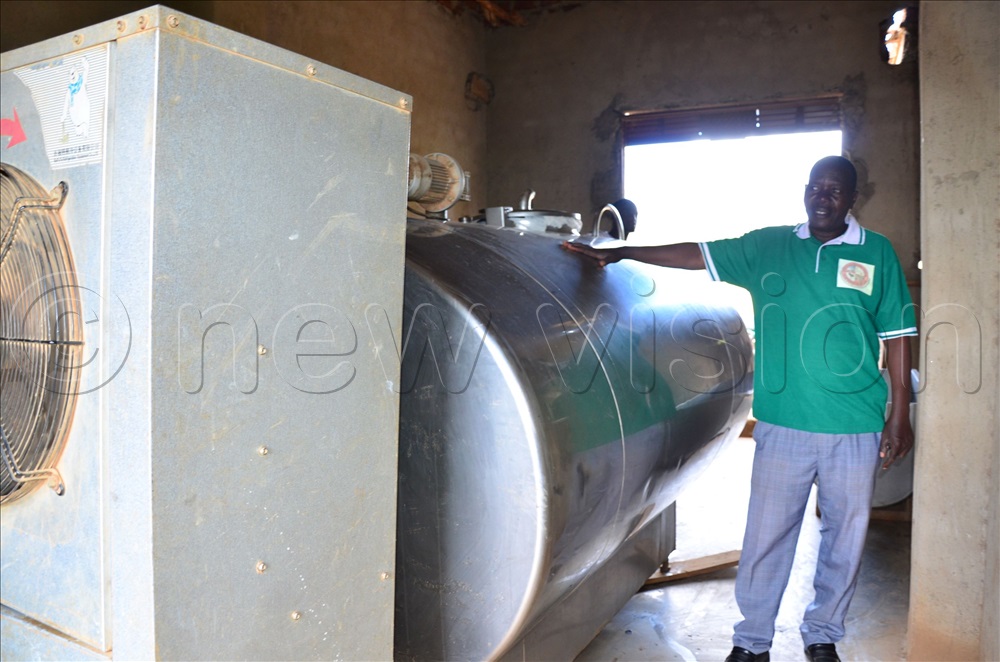For many dairy farmers handling large volumes of milk, spoilage after milking is a recurring challenge.
Without proper cooling, milk quickly turns sour in hot conditions, leading to rejection by buyers and significant financial losses.
This not only affects income but also discourages bulk production. Investing in proper storage, like milk coolers, becomes crucial for sustainable dairy farming.
A milk cooler, also known as a bulk milk chiller, is an essential investment that can significantly reduce such losses, improve milk quality, and boost profits.
Pilgrim Musinguzi, the chairman of Kanyogoga Kigando Farmers’ Cooperative, says their biggest breakthrough came after acquiring a 1,000-litre milk cooler.
“Before, farmers would lose litres of milk because buyers rejected spoilt or sour milk, especially during hot weather. The cooler changed everything,” he explains.

A milk cooler works by lowering the temperature of fresh milk to between 3–4°C immediately after milking, preventing bacterial growth and maintaining quality for longer periods.
This means farmers can bulk and store milk for up to 48 hours before delivery, allowing them to negotiate better prices and transport in larger quantities.
Sabastian Ngambwa, a commercial dairy farmer who owns a 2,000-litre cooler, says it has helped him build trust with processors.
“Processors now know my milk is clean and cold. They no longer delay payments or send it back,” he says.
He adds that milk coolers also help in record keeping and managing supply. “You monitor the litres you produce daily, and it gives you the confidence to scale up.”
Coolers can be powered by electricity, solar energy, or hybrid systems, making them adaptable even in rural settings.
For commercial farmers, a milk cooler is not a luxury, but a game-changing tool for consistency, hygiene, and higher income.





